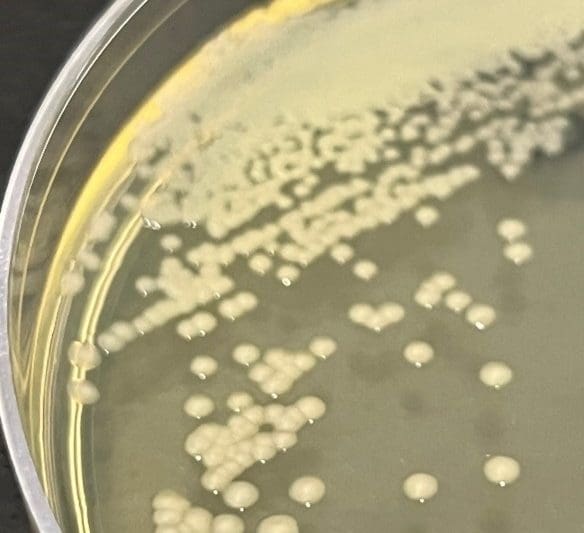
Get A Testing Quote
Pseudomonas fluorescens
STRUCTURE AND PHYSIOLOGY
P. fluorescens is a gram-negative, rod-shaped bacterium that is found in soil, plants, and water. This microorganism is commonly found in the rhizosphere of plants where it produces antibiotics against other soil-borne plant pathogens as well as promotes overall plant growth and health.
TRANSMISSION AND DISEASE
P. fluorescens does not cause disease in plants due to its apparent lack of common virulence factors found in other plant pathogens. Though not considered a common human pathogen, it has been cited to cause bacteremia in immunocompromised individuals.
DISINFECTION
P. fluorescens is capable of degrading certain plant-derived carbohydrates, fatty acids, and oils as well as hydrolyze proteins which have led to spoilage in milk, meat, and fish.
NOTES
One of the antibiotics that P. fluorescens can produce is Mupirocin. This particular antibiotic has shown efficacy in the treatment of MRSA which is resistant to many different antibiotics.
REFERENCE(S)
Paulsen, I.T., Press, C.M., Ravel, J. “Complete genome sequence of the plant commensal Pseudomonas fluorescens Pf-5.” Nature Biotechnology. 2005. Volume 23. p. 873-878.
Hseuh, P., Teng, L., Pan, H., Chen, Y., Sun, C., Ho, S., and Luh, K. “Outbreak of Pseudomonas fluorescens Bacteremia among Oncology Patients” Journal of Clinical Microbiology, 1998. Volume 36, p. 2914-2917
Rode, H., Hanslo, D., de Wet, P.M., Millar, A.J.W., and Cywes, S. “Efficacy of Mupirocin in Methicillin-Resistant Staphylococcus aureus Burn Wound Infection” Antimicrobial Agents and Chemotherapy, 1989. Volume 33, p. 1358-1361.
Share

